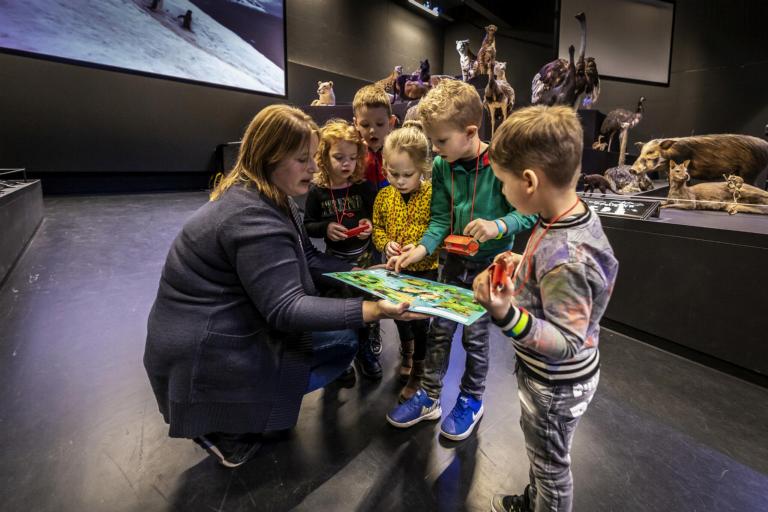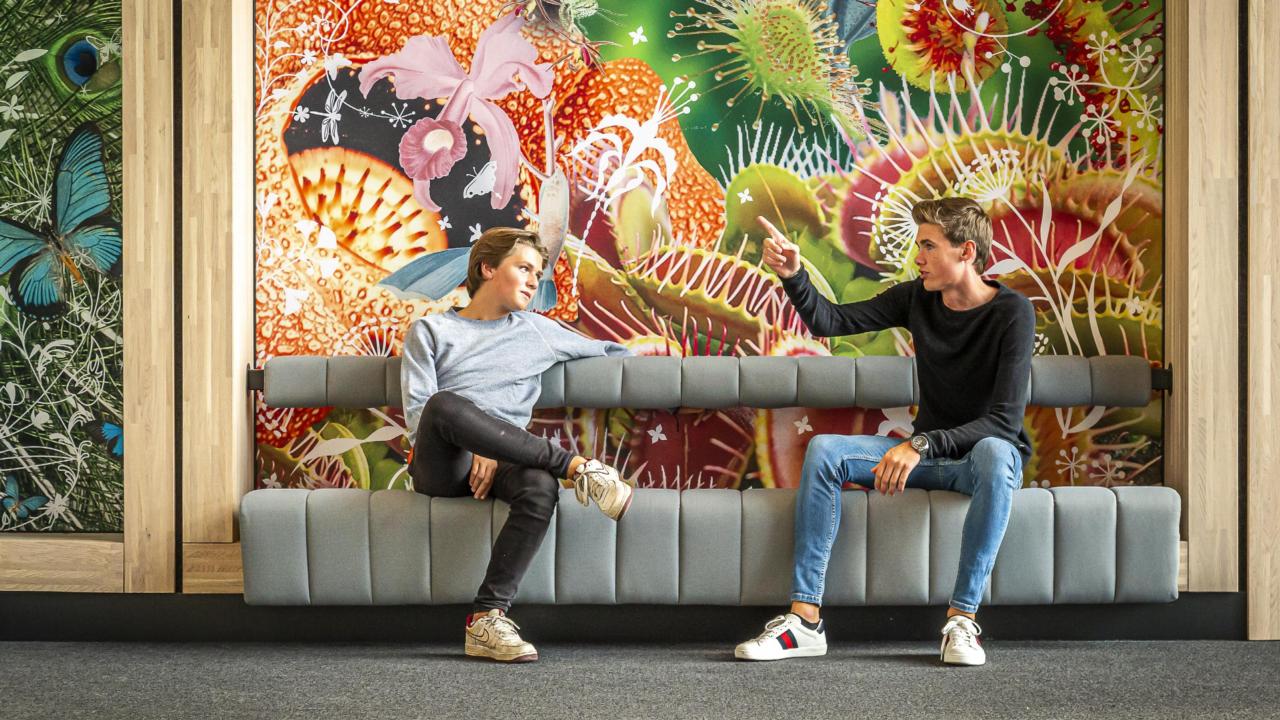
Which creatures live in the water, on land and in the air? Do they have stripes or spots? What do their babies look like? Use a set of binoculars to discover small animals from the present day or larger ones from ancient times. Are you ready? There's so much to discover and explore on this trip!
Everything you need to knowin a row
- Type: exhibition program
- Level: groups 1 and 2 (4-6 years old)
- Length: 90 minutes
- Number of pupils: at least 15, but no more than 108
(At the 10 a.m. start time, there is room for a maximum of 144 students. Please inquire about availability) - Galleries in this program: Life, Dinosaur Era and Seduction
- The school supplies: one parent/supervisor for every five pupils
- Main objective: to explore the diversity of nature
- Link to core objective: pupils are taught about the structure of plants, animals and humans and about the form and function of their constituent parts
- Keywords: patterns, classification, opposites, forms
Course of the program at the museum
In this program, pupils set out on an expedition through three of Naturalis’ galleries. The program consists of two parts: an introduction in the reception area and the expedition through the museum. The schedule given below is an indication only.
0-20 minutes
The group assembles in the reception area, where one education assistant from Naturalis is on hand to give an interactive introduction. “Researchers at Naturalis go on expeditions to learn about plants and animals – will you join our expedition?” During the presentation, the pupils will look and listen to animals that live in water, on land and in the air. Besides classifying them based on where they live, animals can also be classified by whether they are big or small, soft or hard, muted or bright in color, quiet or noisy, and so on. There is so much to learn! The expedition continues in the museum, where each group is given a map with expedition tasks and each child receives their own set of cardboard binoculars.
20-85 minutes
Together with a parent/supervisor from the school, the young pupils will divide into small groups and visit three different galleries. The parent/supervisor reads the expedition tasks on the map aloud, after which the little ones take turns opening a compartment on the map to reveal an extra question, joke or more in-depth information. In the “Life” gallery, an education assistant will be on hand by the learning cabinet to support the parent/supervisor as they help the children discover real animal objects. These objects include feathers, shells and pelts from animals that the kids can touch and examine.
85-90 minutes
The group assembles at a location agreed on in advance, such as in the Atrium.
Practicalinformation
Information about practical matters such as parking, lockers and house rules can be found in our booking information.
